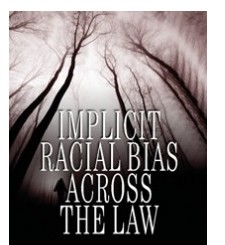(ThyBlackMan.com) Supreme Court justices Justice Sonia Sotomayor and Stephen Breyer virtually seethed with rage in their roundhouse denunciation of the High Court’s denial of review to Bongani Charles Calhoun. The issue again was racial bias in the prosecution of Calhoun on drug charges in Texas. The U.S. Attorney that prosecuted Calhoun quipped during the trial that when you put African Americans and Hispanics in the same room with a bag of money, what else could they be doing but a drug deal or presumably some other criminal act.
The federal prosecutor couldn’t let it go at that. When mildly challenged on his blatant racial stereotyping and even more blatant prejudicing of the jury, he piled on with the even dumber quip: “What does your common sense tell you that these people are doing in a hotel room with a bag full of money, cash? None of these people are Bill Gates or computer [magnates]? None of them are real estate investors.”
Breyer and Sotomayor correctly called it what it was — outrageous prosecutorial racial bias. Their colleagues didn’t agree, and Calhoun’s conviction stood. But Sotomayor and Breyer’s rage at the bias simply pointed up what’s long been noted in far too many federal cases, and in the action and behavior of far too many federal prosecutors. That’s that some will routinely and very calculatingly pander to the overt or latent racial bigotry of some judges and jurors to get a conviction.
up what’s long been noted in far too many federal cases, and in the action and behavior of far too many federal prosecutors. That’s that some will routinely and very calculatingly pander to the overt or latent racial bigotry of some judges and jurors to get a conviction.
They fully know that making overt pejorative racial statements, judgments and opinions about a black or Hispanic defendant are flatly forbidden. And in theory, anyway, are the basis for an appeal, and the possibility of having a conviction overturned. But that threat hasn’t deterred some prosecutors from playing the race card to get a conviction, as Breyer and Sotomayor angrily noted.
Three years before the two judges’ dissent in the Calhoun case, a panel of former federal prosecutors were disturbed enough at the antics of some of their former U.S. Attorney colleagues that they mapped out in tandem with the Brennan Justice Center a series of pointed guidelines to wring out racial bias, overt or sneaky, from the line of attack of prosecutors. Their recommendations included rigorous training and education in what can and can’t be said in trials, tougher management and accountability, and better relations with minority communities.
The former prosecutors were emphatic that because federal prosecutors have enormous power over what cases are brought, and when they are brought, and how they are prosecuted, they have a special duty and responsibility to be fair and unbiased. The problem with that is that many aren’t and this has had devastating consequences in the criminal justice system. The main one being to pump wider the gaping racial disparity in convictions and sentencing, and ultimately who packs America’s prisons.
A March 2009 report, “Racial and Ethnic Disparities in the U.S. Criminal Justice System“, by the National Council on Crime and Delinquency, found that minorities, with the overwhelming majority of them being African Americans, represented 13 percent of the general population. But they made up nearly 40 percent of those incarcerated in federal prisons. The report made it clear that racial bias, either overt or subtle, by some prosecutors was a big reason for a significant number of those tried and convicted winding up behind bars for long stretches.
The Calhoun case also pointed to another glaring flaw in many federal prosecutions and that’s the still prevalent racial disparity in drug prosecutions that have accounted for the explosion in the number of minorities behind federal bars during the last decade. This occurred despite the push by President Obama to purge the racial sentencing disparity from the drug laws.
The standard reasons given for criminalizing practically an entire generation of young blacks is that they are poor, crime-prone, which is pretty much what the prosecutor in the Calhoun case flatly said. Reports and studies by the Justice Department, the U.S. Sentencing Commission, as well as universities and foundations confirm that far more whites use and deal drugs including crack cocaine than blacks. Only a small percent of those sentenced to jail terms are major dealers.
The scapegoating of blacks for America’s crime and drug problem actually began in the 1980s when much of the media quickly turned the drug problem into a black problem and played it up big in news stories and features. Many Americans scared stiff of the drug crisis readily gave their blessing to drug sweeps, random vehicle checks, marginally legal searches and seizures, evictions from housing projects and apartments. When it came to law enforcement practices in the ghettos and barrios, the denial of civil liberties protections, due process and privacy made a mockery of the criminal justice system to many blacks and Latinos.
The federal prosecutors that pander to race to get convictions don’t help matters and reaffirm suspicions that prosecutorial bias is still alive and well in far too many prosecutions. Sotomayor and Breyer made that point, and a handful of former prosecutors have warned against its corrosive effects. But as the Calhoun case showed fingering prosecutors for racial bias alone won’t make it go away.
the GOP myth of “evil” big government.
Written By Earl Ofari Hutchinson
One can find more info about Mr. Hutchinson over at the following site; TheHutchinson ReportNews.
Also feel free to connect with him through twitter; http://twitter.com/earlhutchinson

















Leave a Reply